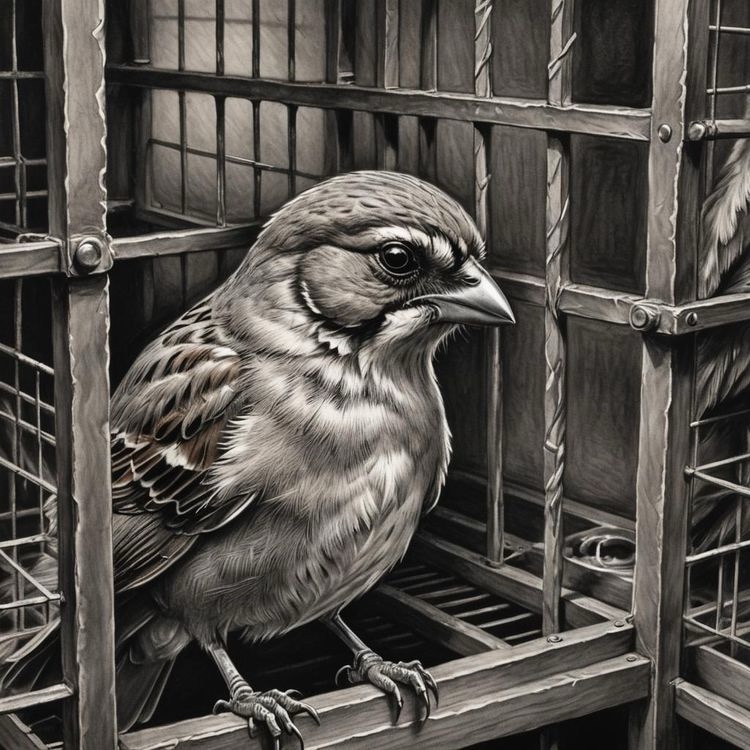There once was a sparrow, from London, you see,
A cheeky young bird with a wish to fly free.
But the poor little Sparrow, though brave in his heart,
Was stuck in a cage, and it tore him apart!
He’d flap and he’d flutter, he’d chirp and he’d shout,
“Let me out, let me out! I need to get out!”
But weights on his legs, oh how they did cling,
Stopping his dream of a free, soaring wing.
One day, came a fox, who was both sly and quick,
With eyes full of hunger, and lips it would lick.
He grinned at the sparrow and said with a gleam,
“Why not hop down, little bird, and follow your dream?”
But the Sparrow knew better, it’s soul sensed the trap,
The foxes intentions, were not under wraps.
Still, Fox played along, with his eyes on the prize,
And waited for Sparrow to turn his bright eyes.
SNAP! went the Fox, but missed with a bite,
For just at that moment, the Sparrow took flight!
The fox bit the weights with a crunch and a clink,
And the Sparrow unshackled, flew free in a blink!
Up into the sky, he soared with a cheer,
The weights now behind him, he had nothing to fear.
The sly fox below gave a huff and a groan,
While the Sparrow sang sweetly, “I’m finally home!”
So off flew the Sparrow, to lands far and wide,
No longer earthbound, and no longer denied.
For sometimes, dear children, in moments of fright,
We find our true wings and we look to take flight!
